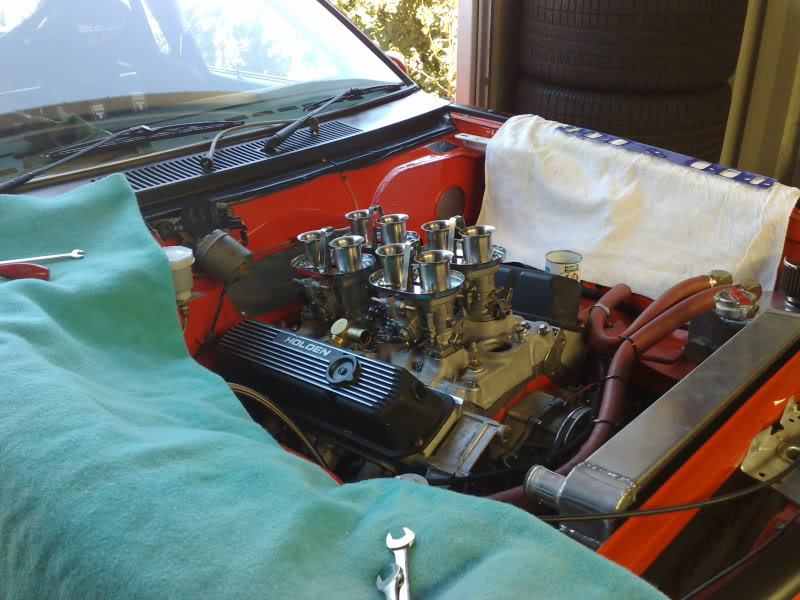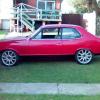 itf.JPG 126.35K
9 downloads
itf.JPG 126.35K
9 downloads
most will be familiar with the idle/transfer ports as most carbs. will have these and weber is no different in the principle operation.
As per the illustration on the left of the picture,the carb. is "throttled",or in an idle state,the picture shows what is happening and the fuel/air is controlled by the idle jet/s.
The idle jets come in a few sizes marked #F#,the first number denotes the size of the hole in the jet that meters fuel,the F# seems to have no set pattern in the size of the hole on the side of the idle jet and is the size of the air bleed.
The idle mixture of course (like most) is controlled by the mixture screw,usually not many dramatic problems happen in the idle circuit and going on what most of the weber manuals say the idle screw needs to have about 1&1/4 - 1&1/2 turns out to have any reasonable
control over the idle adjustment.Going on what i played around on IR manifold with any less than this it is a bit of pain to get any sort of "range" of fine fine adjustment as it denotes that the idle circuit is a bit rich which is either too large an idle jet or too small an idle air bleed.
One home remedy is to sneak up the idle air bleed size with "index" drills and see if that helps,if it does and the idle screw now has a bit more range then we are on the right track,if it gets to a point where the air bleed needs to too big,then drop a size on the idle jet and start again.
Most people would not recommend drilling the jet itself whereas the air bleed is not so bad but still needs to done with some precision.
The transfer is the next,and same as most carbs. the same principles apply.
As can be seen in the illustration to the right in the picture the transfer starts to operate when the plate exposes the transfer holes and that the idle circuit is still in operation.Now we have two circuits both working off the idle jet,the idle systems flow is controlled by the mixture screw,but the transfer system is controlled entirely by the idle jet and the transfer holes (which are usually larger than the idle jet hole so the transfer holes are doing nothing?) and there is a good chance that the idle circuit is starting to "drop off" due to lack of signal at the idle feed hole?
Problems in this area also relate to the idle jet.The main noticeable problems can take a bit to "sort out" but having said that i found that by getting the idle "nice" it seemed to fix the transfer fault as well.
Too lean on the idle jets and you might get a backfire when slowly opening the plates on a light load,or it will feel "draggy".
Too rich and it will feel "soggy",again on light opening/light load ...all with engine at operating temp...and worse on a warm day.
The other thing is that if the idles are bit on the rich side is that if you just open the plates just a tad to make transfer begin is that it will not come back to a clean idle...sort of like a bit of choke "stumble" if you like.
Some times it can help on finding out which way to go by simply taking another set of jets that are quite a bit larger or smaller to try and see what the result is,you will soon know which way to go...i think even on very light openings that the pump adds a bit as well,might not be much.
I have only found this out with a bit of reading an stuffing around and don't claim to be some expert,it's just from personal experience and a bit of help from around the place.







 View Garage
View Garage












